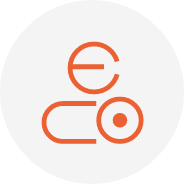How to Improve Switching Efficiency When Tightening Screws of Different Specifications
In modern industrial production, multi-product co-line manufacturing has become the norm. For electric screwdrivers, frequently switching parameters for screws of different specifications has long been a bottleneck affecting production efficiency. Traditional screwdrivers require significant time to reconfigure tightening parameters each time a new model is introduced. This not only increases the complexity of manual operations but also risks parameter-setting errors due to human mistakes, compromising product quality and production efficiency. Danikor’s electric screwdriver, with its unique technological and functional design, offers an effective solution to this problem.

A standout feature of the Danikor electric screwdriver is its ability to pre-store hundreds of Pset torque programs. In multi-product co-line production, each screw specification can be pre-configured with its tightening parameters and saved as an independent Pset program. During model changeovers, operators simply switch to the corresponding Pset program to instantly recall the parameters for the new screw specification, eliminating tedious reconfiguration, significantly improving changeover efficiency, and shortening production preparation time.
Furthermore, the Danikor electric screwdriver supports switching tightening programs via QR code scanning. In real production scenarios, each product model or screw specification can be assigned a unique QR code. During changeovers, workers only need to scan the relevant code with the screwdriver, and the device will automatically identify and switch to the corresponding Pset program. This not only simplifies operations and reduces difficulty but also prevents quality issues caused by incorrect program selection, ensuring consistent and stable product quality.
For products requiring screws of multiple specifications, the Danikor electric screwdriver demonstrates even greater versatility. It allows tightening tasks to manage all screw-tightening programs. Within a task, the tightening parameters for each screw are sequentially configured according to the product’s actual assembly order, forming a series of Pset programs. When tightening begins, after each screw is fastened, the device automatically switches to the next Pset program, preparing for the next screw. Combined with a quick-change bit mechanism, the screwdriver can automatically replace the bit to suit the next screw based on the current task requirements. The entire process requires no manual intervention, enabling fully automated screw tightening, greatly enhancing production efficiency and assembly precision while reducing labor and time costs for enterprises.
In practical applications, these features of the Danikor electric screwdriver have been fully validated. For example, in the electronics manufacturing industry, a single product may use screws of various specifications to secure different components. Traditional screwdrivers require frequent bit changes and manual parameter adjustments, resulting in low efficiency and high error rates. With the Danikor electric screwdriver, pre-configured tightening tasks allow the device to automatically handle screws of different specifications—including automatic bit changes and parameter switching—significantly boosting production efficiency and reducing defect rates, thereby enhancing market competitiveness for enterprises.
By leveraging innovative features such as Pset program configuration, QR code-based program switching, tightening task management, and quick-change bit mechanisms, the Danikor electric screwdriver effectively resolves the efficiency challenges of switching between screws of different specifications. It provides a highly efficient and reliable tightening solution for modern multi-variety, small-batch production models, offering strong support for production efficiency and quality control in industrial applications, with broad prospects for adoption.











